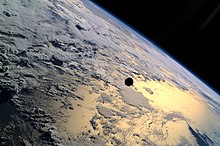|
PANSAT
PANSAT (Petite Amateur Navy Satellite, also known as OSCAR 34) was an amateur radio satellite. It was launched by Space Shuttle Discovery during the STS-95 mission as part of the third International Extreme Ultraviolet Hitchhiker (IEH-3) mission, on 30 October 1998 from Kennedy Space Center, Florida.[2][3]  The satellite was built by students from the Naval Postgraduate School in Monterey, California. It offered the possibility of packet radio transmission in BPSK or Direct-Sequence Spread Spectrum in the 70 cm band. The satellite was configured in a sphere-like shape, featuring 26 sides used for solar cell and antenna placement.[4] The spacecraft supplied direct-sequence, spread-spectrum modulation with an operating center frequency of 436.5 MHz, a bit rate of 9600 bit/s and 9 MB of message storage. References
|
||||||||||||||||||||||||||||||||||||||||||||||||||||||||||
Portal di Ensiklopedia Dunia
